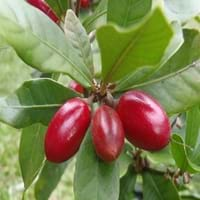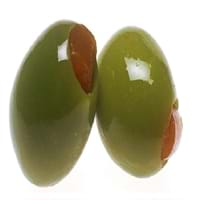Health Benefits
Good for diabetics, Improves well-being, Miraculin/miracle fruit makes sour things taste sweet
Cancer prevention, Helps in cartilage regeneration, Prevents macular degeneration, Treatment of alzheimer's disease
General Benefits
Has taste modifying effect
Anti oxidant properties, Anti-inflammatory properties, Boosts immune system, Controls blood pressure, Digestive aid, Maintains healthy cholesterol level
Skin Benefits
NA
Hydrates skin, Skin rejuvenation, Treatment of skin diseases
Hair Benefits
NA
Acts as moisturizer, Good conditioner, Regulates hair growth
Allergy Symptoms
Itching, Skin rash
NA
Side Effects
Changes taste of food eaten after this fruit, Coagulation
Affects blood glucose levels, Dizziness, Stomach pain
Best Time to Eat
As a snack in the late afternoon, Eat the fresh ones, avoid mixing with any other foods, don't eat after meal., Morning time (before lunch)
Hardly eaten raw, Olive oil is consumed for many purposes.
Protein to Carb Ratio
Not Available
Vitamin A (Retinol)
Not Available
Vitamin B1 (Thiamin)
Not Available
Vitamin B2 (Riboflavin)
Not Available
Vitamin B3 (Niacin)
Not Available
Vitamin B5 (Pantothenic Acid)
Not Available
Vitamin B6 (Pyridoxin)
Not Available
Vitamin B9 (Folic acid)
Not Available
Vitamin C (Ascorbic Acid)
Vitamin K (Phyllochinone)
Not Available
Lutein+Zeaxanthin
Not Available
Water Content
Not Available
Calories in Fresh Fruit with Peel
Not Available
Calories in Fresh Fruit without Peel
Not Available
Not Available
Calories in Frozen Form
Not Available
Not Available
Calories in Dried Form
Not Available
Calories in Canned Form
Not Available
Calories in Juice
Not Available
Calories in Jam
Not Available
Calories in Pie
Not Available
Season
Monsoon
Spring, Summer
Varieties
Gymnema Sylvestre and Thaumatococcus Daniellii
Manzanillo, Sevillano, Mission, Ascolano, Barouni, Gordal, Rubra and Picholine
Color
Dark red
Black, Green, Purple, Yellow
Inside Color
Greyish-white
Brown
Origin
West Africa
Eastern Mediterranean Region
Soil Type
Well-drained
Well-drained
Climatic Conditions
Rainfall
Warm to hot climate
Facts about
- The name 'Miracle' because of the magical experience you get after eating it.
- When you have lemon after eating this fruit, it tastes sweet as if it is added with sugar.
- It is also used as natural sweetener.
- In ancient Greece, 1st eye shadow was made by adding olive oil in ground charcoal.
- The most expensive form of olive oil is Extra Virgin.
- Largest type of olive tree is known as donkey tree & smallest one is called bullet.
Other Countries
NA
Algeria, Egypt, Greece, Italy, Morocco, Portugal, Syria, Tunisia, Turkey
Top Importer
Not Available
United States of America
Top Exporter
United States of America
Italy
Botanical Name
Synsepalum Dulcificum
Olea europaea
Synonym
Miracle Berry, Miraculous Berry and Sweet Berry
Not Available
Subkingdom
Tracheobionta
Tracheobionta
Division
NA
Magnoliophyta
Subclass
Asteridae
Rosidae
Family
Sapotaceae
Oleaceae
Species
S. dulcificum
O. europaea
Generic Group
Not Available
Olive
Difference Between Miracle fruit and Olive
We might think that Miracle fruit and Olive are similar with respect to nutritional value and health benefits. But the nutrient content of both fruits is different. Miracle fruit and Olive Facts such as their taste, shape, color, and size are also distinct. The difference between Miracle fruit and Olive is explained here.
The amount of calories in 100 gm of fresh Miracle fruit and Olive with peel is Not Available and 115.00 kcal and the amount of calories without peel is Not Available and Not Available respectively. Thus, Miracle fruit and Olive belong to and category.These fruits might or might not differ with respect to their scientific classification. The order of Miracle fruit and Olive is Ericales and Lamiales respectively. Miracle fruit belongs to Sapotaceae family and Olive belongs to Oleaceae family. Miracle fruit belongs to Synsepalum genus of S. dulcificum species and Olive belongs to Olea genus of O. europaea species. Beings plants, both fruits belong to Plantae Kingdom.









